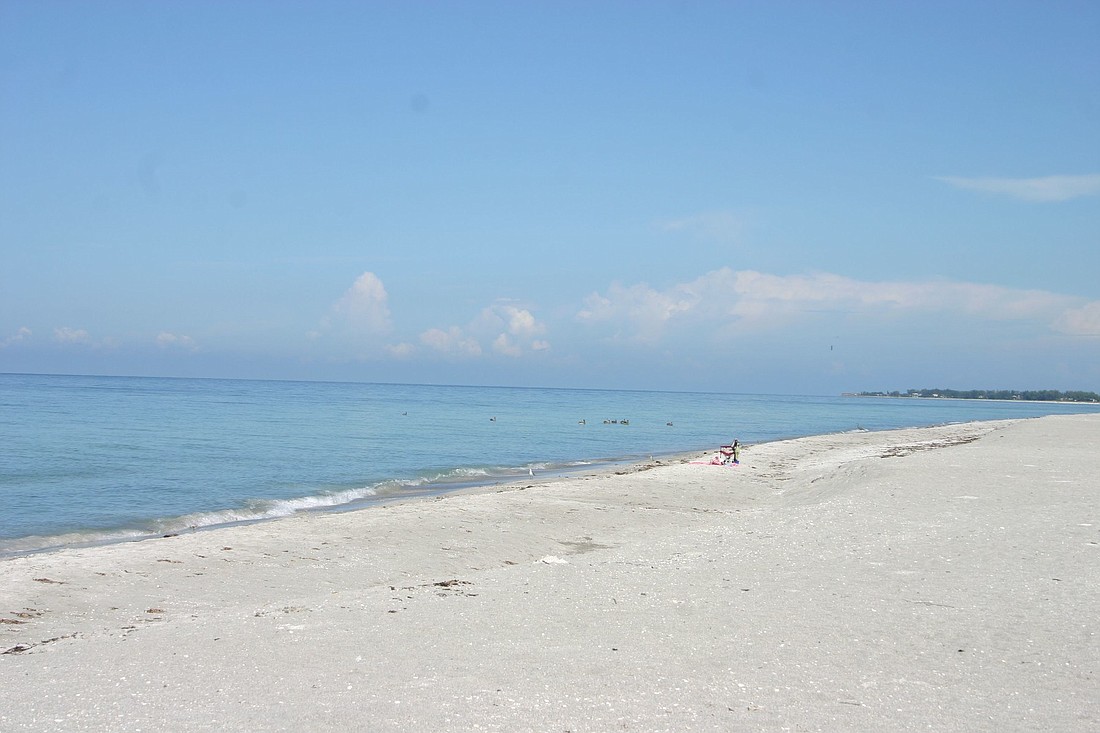- April 16, 2024
-
-
Loading

Loading

Sarasota County maintenance employees were working Friday morning to clean up Blind Pass Beach, where fish killed by red tide had washed up, George Tatge, a Parks and Recreation Department manager, told the Pelican Press.
That 3,000 square feet of beach, part of Manasota Key, is the southernmost, Sarasota County-owned beach, he explained.
About 11 a.m. Friday, Oct. 14, he said the maintenance crew was staying just on the public part of the beach. Most of the dead fish, he said, were baitfish, though a few grouper and other species were among the mix. “We’re just getting the first taste (of the fish kill),” he said. It was hard to quantify the number, he added. “It’s not just a few or a couple,” but the incident so far in no way compares to the major red tide fish kills of the 1990s, he said.
Tatge and other county officials were waiting to see whether the winds would continue to blow out of the south and west, and push more dead fish ashore, he added. A contractor is on standby in the event the problem worsens to the point beyond which county maintenance staff can handle it, Tatge said.
If the thousands of dead fish offshore do begin washing up on the beach, he said, the county would expect a declaration from the Sarasota County Health Department that the incident posed the risk of spreading disease to the public. Then, the contractor would start work on the cleanup. “It takes several days and big enough fish,” generally, to reach that point, he said.
As of Oct. 12, the Florida Fish and Wildlife Conservation Commission reported that the red tide bloom, caused by the organism Karenia brevis, extended approximately 2 to 12 miles offshore of Charlotte and Lee counties, from Gasparilla Pass south to Captiva, with the densest concentrations reported offshore of Cayo Costa.
The red tide bloom first was reported two weeks ago in southwest Florida, FWC noted. Sampling was to continue, with an update set for later Oct. 14.